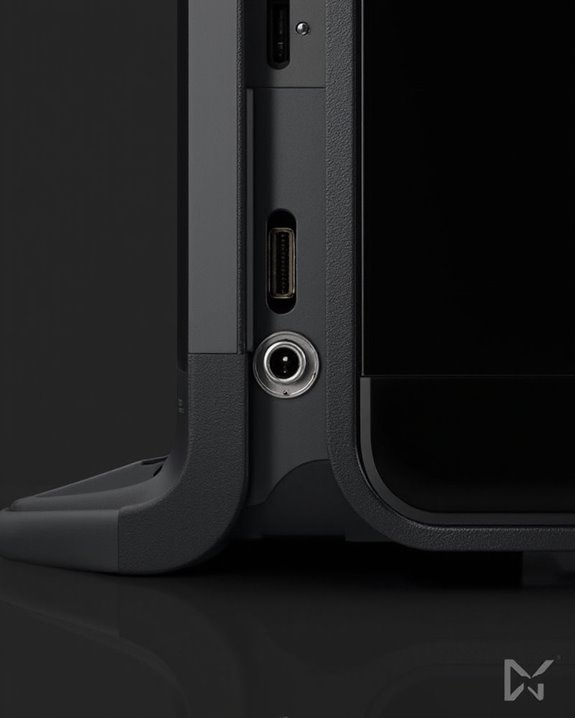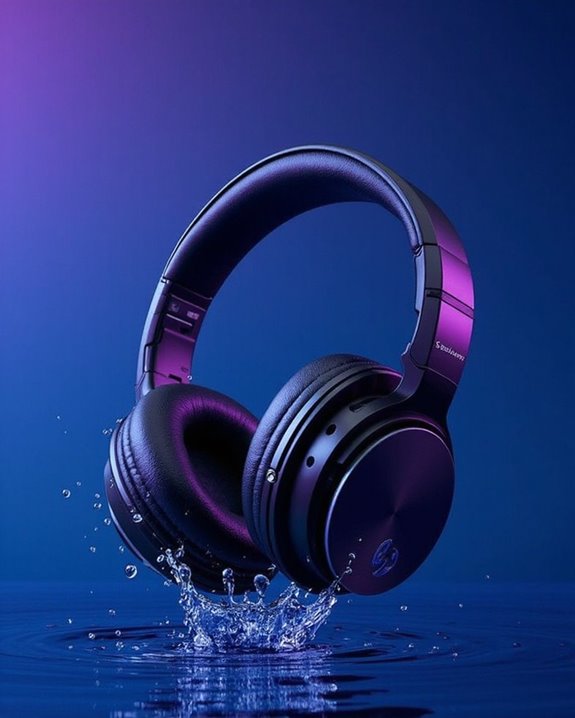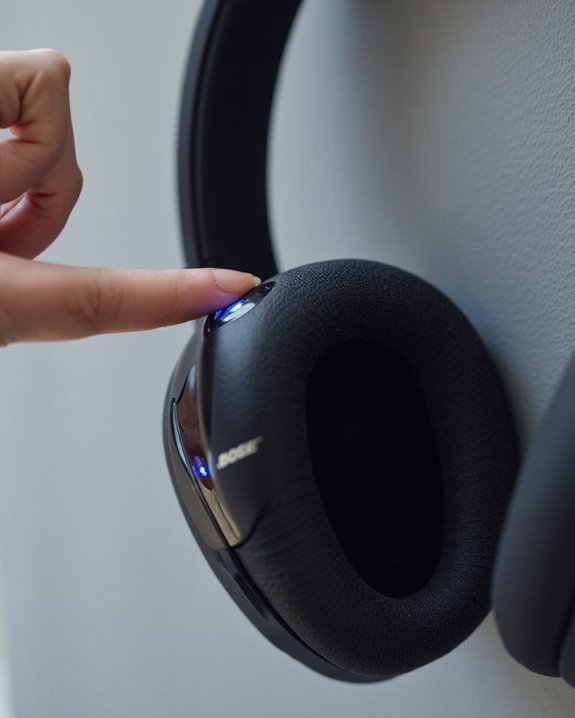Bone conduction headphones transmit sound through vibrations rather than air. They feature transducers that convert audio signals into mechanical vibrations applied directly to the temporal bone of the skull. These vibrations bypass the eardrum and travel through cranial bones to the cochlea, where they’re processed as sound. This technology allows users to maintain awareness of surroundings while listening to audio content. The open-ear design offers unique advantages for athletes and those with certain hearing impairments.
Key Takeaways
- Transducers convert audio signals into vibrations that bypass the eardrum and travel through skull bones.
- Vibrations are applied directly to the temporal bone and conducted to the cochlea for sound perception.
- Headphones position against cheekbones or temples to efficiently transmit vibrations to inner ear structures.
- The technology keeps ear canals open, allowing users to hear environmental sounds while listening to audio.
- Sound is primarily conducted through bone rather than air, making it ideal for hearing-impaired individuals.
The Science Behind Bone Conduction Technology
How exactly does sound travel through bone instead of air? Unlike traditional headphones that send sound waves through the air into the ear canal, bone conduction technology bypasses the outer and middle ear entirely. The transducer in bone conduction headphones converts audio signals into mechanical vibrations that are applied directly to the temporal bone of the skull.
These vibrations travel through the cranial bones to reach the cochlea directly, stimulating cochlear mechanics without involving the eardrum. Once these vibrations reach the inner ear, they trigger the same neural impulses as air-conducted sound. The cochlear hair cells respond to these mechanical stimulations, converting them into electrical signals that travel to the brain for interpretation.
This transmission method is particularly effective for low-frequency sounds, though bone conducts all frequencies less efficiently than air. Leading models like the SHOKZ OpenRun Pro 2 utilize advanced dual drivers to enhance sound quality via bone conduction technology.
Key Components and Design of Bone Conduction Headphones
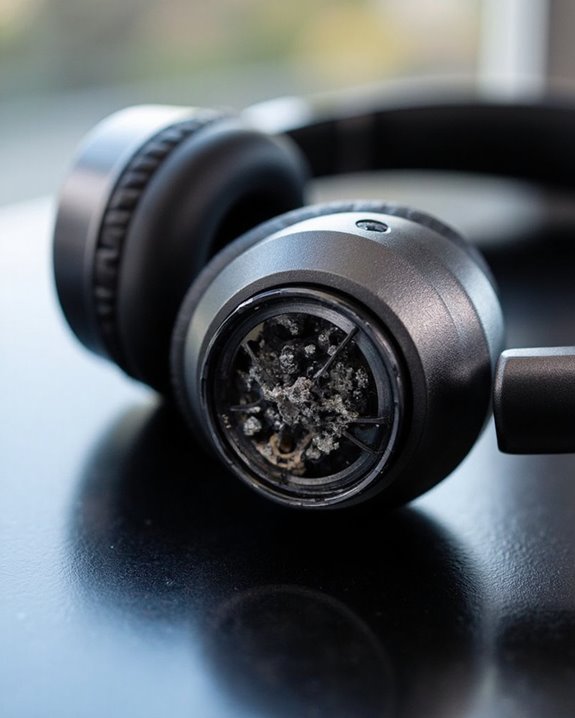
Now that we understand the science behind bone conduction, examining the physical design that makes this technology wearable and functional becomes important. Bone conduction headphones feature either piezoelectric or electromagnetic transducers positioned near the cheekbones or temporal bone, transmitting vibrations directly to the cochlea.
Current Design Trends emphasize open-ear configurations with headbands that wrap securely around the back of the head. Material Selection focuses on lightweight, durable compounds that enhance comfort during extended wear while offering water resistance—often achieving IP68 ratings for waterproofing. Many manufacturers implement dual-drive technology to improve sound reproduction.
The distinctive structure maintains environmental awareness by keeping ears uncovered while specialized ergonomic designs guarantee stability during physical activities. These components work together to create devices that balance acoustic performance with practical durability. For example, models like the SHOKZ OpenRun utilize a lightweight titanium frame to provide comfort and secure fit for athletes.
Advantages for Everyday Users and Athletes
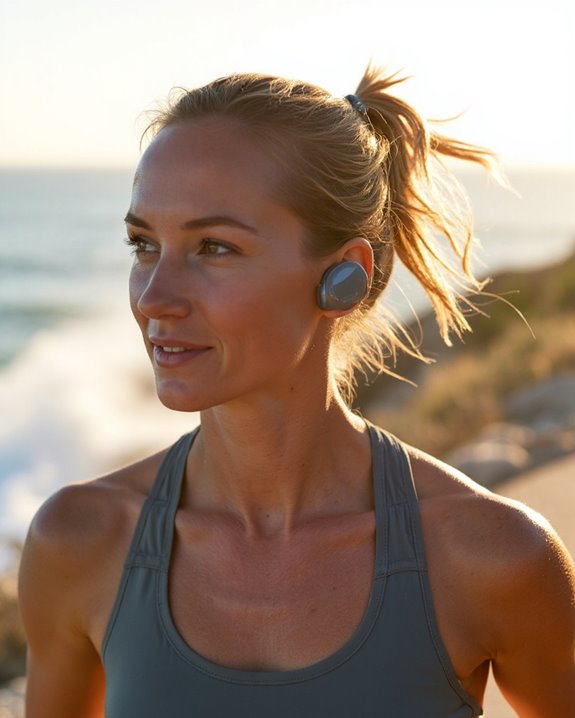
The versatile design of bone conduction headphones offers substantial benefits for both casual users and active individuals seeking audio solutions without sacrificing environmental awareness. By resting on the cheekbones rather than covering or entering the ear canal, these devices maintain open ear canals for continuous ambient sound detection.
User Comfort is greatly enhanced through the non-invasive design, which eliminates ear canal pressure and allows comfortable extended wear. The stable fit accommodates eyeglasses and hearing aids without interference, while remaining secure during vigorous activities.
Athlete Safety represents a primary advantage, particularly for runners and cyclists traversing urban environments. These headphones enable simultaneous enjoyment of audio content while maintaining vital awareness of traffic sounds, emergency signals, and potential hazards—creating a safer exercise experience than traditional headphones permit. Additionally, many models feature IPX7 waterproofing to protect against sweat and rain, ensuring durability during intense workouts.
Limitations and Performance Considerations
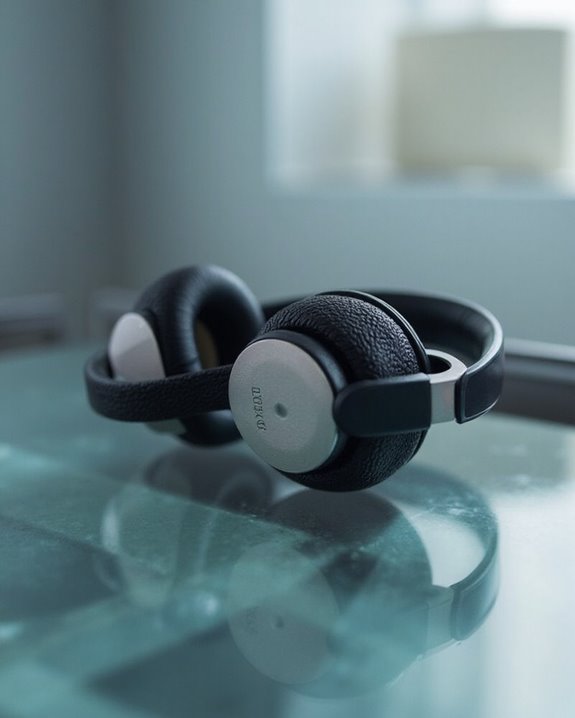
While bone conduction headphones offer notable advantages for safety and comfort, users should consider several important limitations before investing in this technology. Sound quality typically falls short of traditional headphones, particularly in bass response and overall richness of audio. High volumes can lead to distortion, disappointing audiophiles seeking premium sound experiences.
Sound leakage presents another notable drawback, as vibrations transmit audible noise to nearby listeners, potentially compromising privacy in quiet environments like offices or libraries. This issue remains despite design improvements.
Fit stability challenges arise during physical activities when sweat or movement can cause the headphones to shift position, disrupting consistent audio delivery. The effectiveness depends considerably on head shape and temporal bone structure.
Price represents a final consideration, with most quality models starting above $100—substantially higher than conventional alternatives.
Modern Applications and Future Innovations
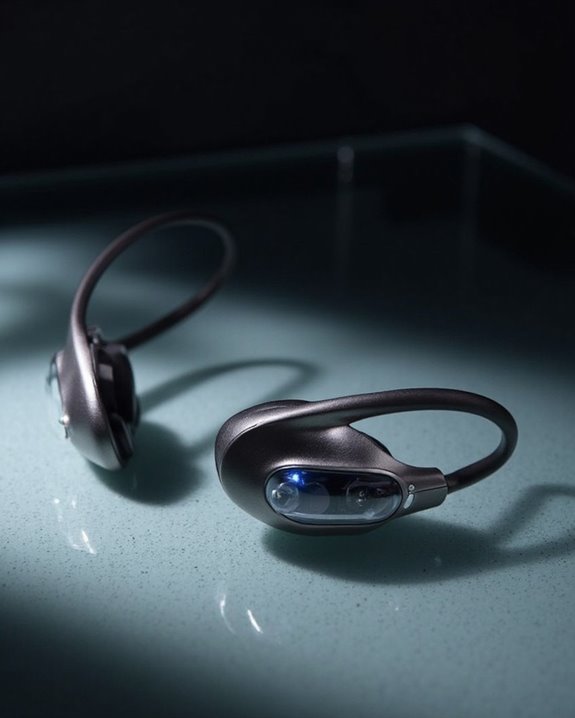
Despite their sound quality limitations, bone conduction headphones have found diverse applications across multiple environments where situational awareness remains critical. Fitness enthusiasts, office workers, and individuals with hearing impairments benefit from this technology’s unique ability to deliver audio while maintaining environmental awareness.
Market expansion continues as major brands like Samsung enter the space, driving innovation in waterproof models for swimmers and specialized designs for workplace environments. Future developments likely include integration with fitness trackers and smart devices, improved water resistance, and enhanced audio quality.
The ethical implications of bone conduction technology extend beyond convenience to safety and accessibility. By allowing users to remain alert to surroundings while consuming audio content, these devices potentially reduce accidents during commuting and outdoor activities—positioning them not merely as alternative headphones but as safety-enhancing tools.
Frequently Asked Questions
Can Bone Conduction Headphones Damage Your Hearing Over Time?
Bone conduction headphones can cause hearing damage over time when used at high volumes or for extended periods. The safety effects are comparable to traditional headphones, as both deliver sound energy that potentially harms the cochlea.
Are Bone Conduction Headphones Suitable for Children?
Bone conduction headphones are suitable for children, offering enhanced Child Safety by keeping ears open to environmental sounds while providing Kid Comfort through their lightweight design that avoids ear canal pressure and discomfort during use.
How Do Bone Conduction Headphones Compare to Traditional Hearing Aids?
Bone conduction headphones offer environmental awareness but typically deliver inferior sound quality compared to hearing aids. They generally have longer battery life but lack the customized amplification and clinical features that traditional hearing aids provide for hearing loss.
Can I Swim While Wearing Bone Conduction Headphones?
Like Neptune’s own audio technology, bone conduction headphones with IPX8 water resistance can indeed be worn while swimming. Their aquatic durability allows full submersion, transmitting sound through cheekbones rather than ear canals.
Do Bone Conduction Headphones Work With All Types of Hearing Loss?
Bone conduction headphones aren’t universally effective for all hearing loss types. They work best with conductive loss by bypassing damaged pathways, but have limited benefits for severe sensorineural loss. Compatibility myths often overstate their effectiveness.


